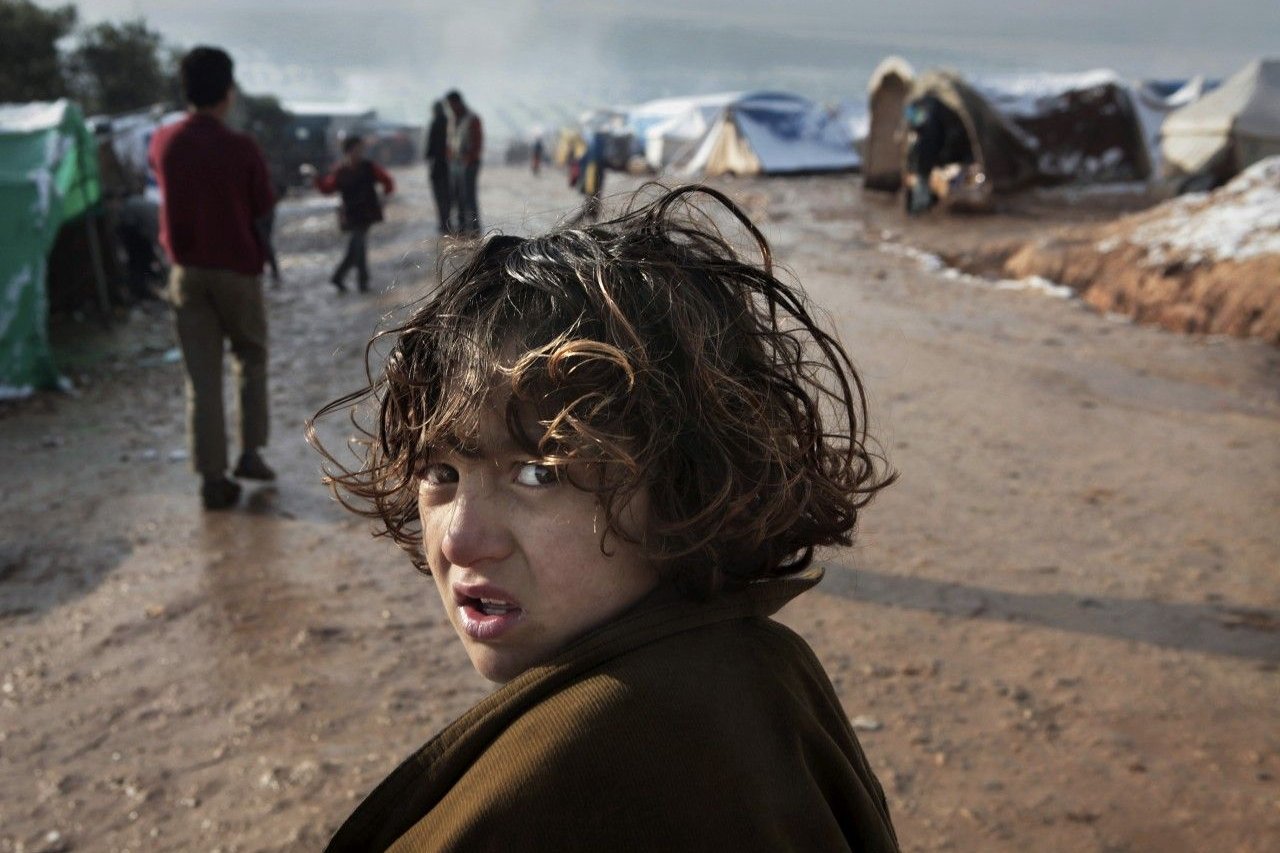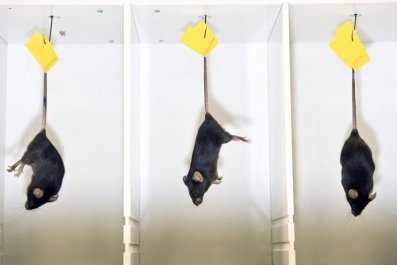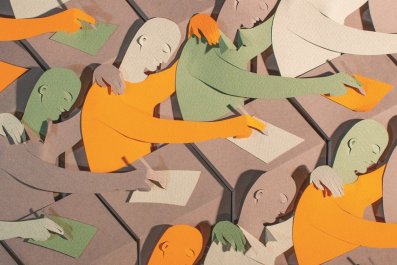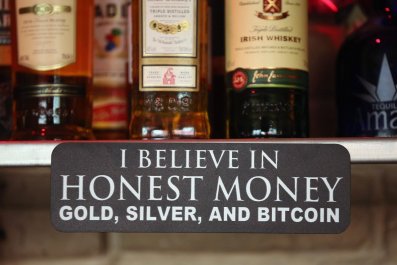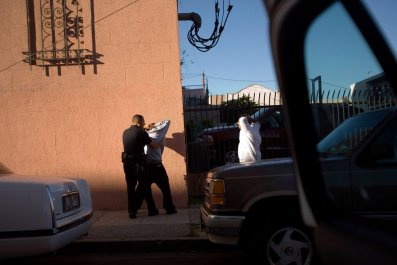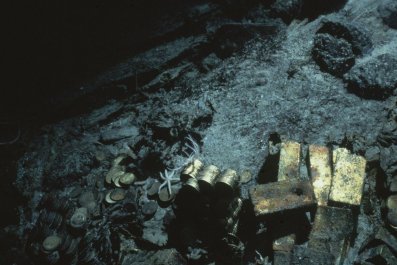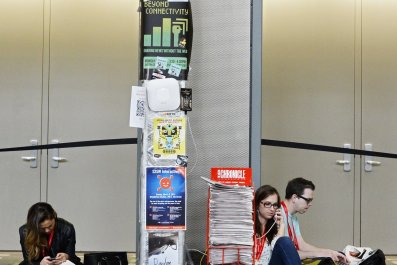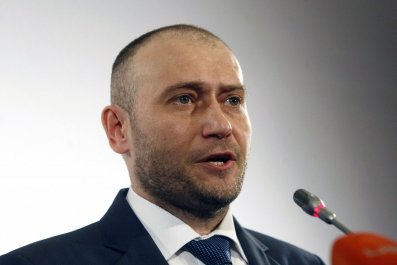It did not take long for the infant to die. A half-hour after her parents brought her into the makeshift emergency room lit by hazy flashlights, she was gone. The 26-year-old doctor, a third-year resident, worked frantically over her lifeless body. He had not slept for a day, but was determined to save her life.
The doctor, who goes by just the name Dr. Hamza, lost the battle. After a few minutes' resuscitation, the girl died.
The doctor wrapped a triangular cloth around the small corpse. Her mother slumped on a chair, in shock. Her father paced the room. They had not yet named her.
This baby did not die of shrapnel wounds or a sniper's bullet. She died from a respiratory illness. According to the charity Save the Children, the majority of children's diseases in Syria—measles, diarrhea and respiratory illnesses—are treatable.
"When I see a wizened dead baby," said one U.N. officer. "I think: did they really die of starvation? Or did they die of some horrible disease? Or even a treatable one they can't get drugs for?"
Sixty percent of the hospitals in Syria are damaged or destroyed; half the doctors have fled the country. Medicine is heading backward several centuries.
Untrained doctors are operating on patients in storefront clinics. Herbal cures are sought by cancer sufferers.
And it gets worse. Save the Children reports that newborn babies are dying in incubators because of power cuts. Children's limbs are being amputated because there is no appropriate treatment. Metal bars are used to knock people out instead of anesthetic.
Hamza saw a 2-year-old die from an allergic reaction to antibiotics—simply because the hospital did not have a ventilator.
The beleaguered staff takes turns working in shifts, sleeping and eating, often without electricity or heating. Their eyes have the glazed look of people who have witnessed too much suffering.
Would the 15-day-old baby have lived if her parents had been able to reach the hospital sooner and had the proper drugs and equipment?
"Most likely. It was not a serious illness," said Hamza. "Her parents could not get to the hospital because of the bombing."
As they carried out the little body, someone said, "She is lucky. She won't have to grow up during this war."
As the grim third anniversary of the war passed on March 15 the Syrian people tried vainly to count the dead. The generally used figure is 140,000, but it may be higher. Everyone inside the country seems to have lost someone.
Many cannot leave because they are too old, too poor or simply have no way out of besieged territories. As the crisis accelerates, concern for the most vulnerable—the elderly, the poor, and the chronically and terminally ill—becomes more pressing.
The Syrian American Medical Society says there have been more than 200,000 "excess deaths." But according to Dr. Annie Sparrow, a public health specialist from Mount Sinai Hospital in New York, who works on the Syria crisis, "Their most current estimates are in the order of 300,000 and about half those chronically ill have had treatment interrupted. "
"Lack of data means that the U.N. has given up counting the dead, let alone attempting to count those with chronic disease, so it is very hard to know," she said.
Three years of war have blown apart hospitals, clinics, rehabilitation centers, laboratories, pharmacies and warehouses storing drugs. For medical practitioners, this means a lack of medical services.
Chemotherapy, for instance, does not exist in Aleppo, even though al-Kindi Hospital was once one of the best cancer hospitals in Syria. Al Kindi is now a pile of rubble. In Homs, one activist reported that kidney dialysis is almost impossible.
Syria was once a model for medical systems in the region and the second-largest pharmaceuticals producer in the Middle East. But while Aleppo should have 2,500 doctors practicing today, Save the Children reports that they have 36.
There are few options for the terminally ill. Cancer patients must either go to Damascus or Turkey to be treated—if they can afford it—or die at home. There are no laboratories to monitor their white blood cell count. "Sometimes all we can give them is painkillers," said Hamza. "They suffer horribly."
First-aid responders of the Syrian Arab Red Crescent continue to operate. But they pay a heavy price: 34 killed since the conflict started.
"Makeshift doctors without degrees are setting up shop," said Dr. David Nott, a British surgeon who took unpaid leave to work in Syria and has freelanced for Doctors Without Borders and the International Committee of the Red Cross in Northern Syria. "These are untrained people acting on the side as doctors to make a few bob."
He heard about a car mechanic who had turned surgeon. "He reckons he can fix cars so he can fix people," said Nott.
While Nott spends most of his time operating on victims of barrel bombs—dropped from helicopters by President Bashar al-Assad's forces to inflict the worst possible damage on human beings—he said there is nothing to do for victims of chronic disease. "People with cancer, diabetes, hypertension are in trouble," Nott said. "They just die at home."
Other diseases, like diabetes, are also impossible to treat. Insulin, for instance, needs to be refrigerated, but sufferers often live without power for days so the drug spoils. "Because of this, people with chronic diseases come in with advanced symptoms, like wet gangrene from diabetes," Nott said.
Even where drugs are available, Hamza says they are expensive. The cost to his field hospital in Aleppo of medication to treat 1,500 patients with Type 1 diabetes for three months was nearly $10,000.
"That's only one type of diabetes," he said. "We are not even talking about other forms. Or hypertension. Or heart disease."
The situation has become so bad that activists near Hama report that cancer patients, unable to receive chemotherapy or radiation, are resorting to camel milk and tropical fruit as alternative medicine. But camel milk is rare and costs about $7 a kilo. That's a fortune these days in Syria.
"It's a silent war for kids who are chronically ill and can't receive treatment in Syria," said Juliette Touma from UNICEF. "They are at a higher risk to die without anyone noticing. The problem is there are 1 million children living in places under siege and in hard-to-reach places, and we cannot reach them on a regular basis."
In Damascus, Dr. Bassam Barakat, who is trying to open a children's clinic in Latakia, said that the before the war, the government subsidized nearly 90 percent of cancer treatments.
"But since European and Western sanctions against Syria, we don't get drugs from big companies like Glaxo. We have to rely on drugs from Russia, China and Iran [whose governments back the regime]," he said. "Those drugs are all right. But the ones from Thailand and Philippines are really bad."
"But what we need the most is not even medicine," said the Aleppo doctor, Hamza, laughing at his own gallows humor. "It is to stop the bombing."



